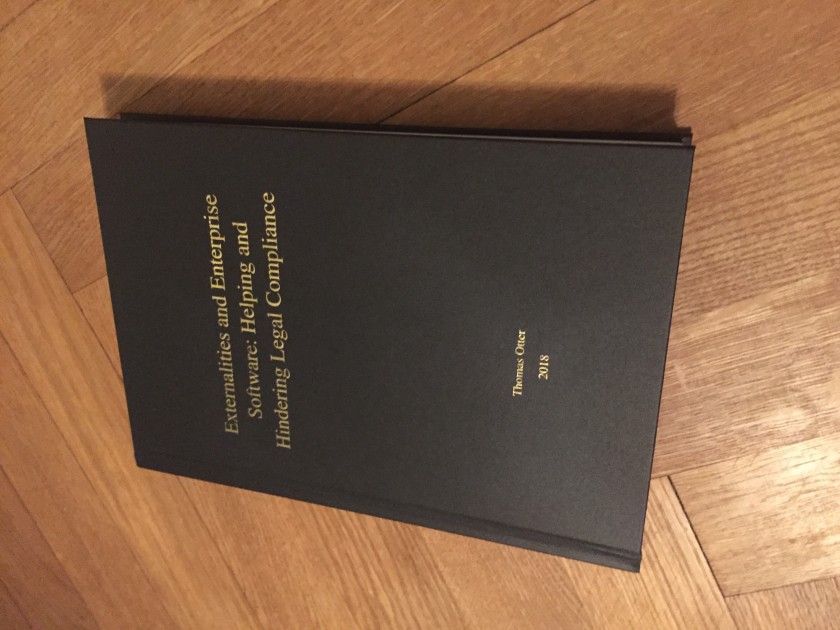(crossposted on the Otter Advisory blog)
This morning, at the Karlsruhe Institute of Technology, I successfully defended my PhD. I completed the written work last year, and getting the oral defence done today is the final step in what has been a long road. There is a bit of admin to do before I can formally use the title, but the work is done.
There are many people I would like to thank. The support I have had along the way from friends and colleagues has been remarkable. herewith an extract from the acknowledgments.
Well over a decade ago, Klaus Tschira suggested that I talk to Professor Thomas Dreier at the ZAR at KIT. I’m grateful to Klaus for many things, but I’m especially thankful for that. Klaus is sorely missed. Professor Dreier’s patient encouragement enabled me to push through to submission. Thank you.
Dr Oliver Raabe has been a most dedicated and willing mentor and guide. His knowledge, encouragement, generosity seem limitless. Without his support, much of this work would have remained mere ideas. Dr Thorsten Schwarz at the KIT SZS went out of his way to help me with the lab test for the blind and visually impaired students, and provided support and advice as I learnt about the challenges that software can inflict on people with disabilities. Max, Florian, Joshua and Philipp, thank you for your deep and focused engagement with testing. Thank you also to Professor Andreas Oberweis for being the secondary supervisor. Thanks to Daniel Vonderau for his help with legal citations and research, and others at KIT for their support. It is a most welcoming and special place
I’m very grateful to the nearly 600 people who to took time to diligently respond to the survey, and to those that publicised it, especially James Governor. Thanks to Irina Sedenko and Dr Ron Fisher for their assistance with the statistical analysis. Professor Armin Trost, your encouragement and advice helped me develop more discipline and rigour. Thanks also to the people I interviewed along the way, Matthew, Liz, Michael, Anne, Neil, Chirag, Janet, Nichole, Jerome, Nigel, Rebecca, James, Jonas, and Dr Fuchs.
To my wife, Charlotte, and our children, thank you for all you do. I’m sure I have not been that easy to live with during the final push. Charlotte’s proof reading was invaluable but any remaining random punctuation is entirely my fault.
And finally, thanks Dad, your gentle but constant chiding was a brilliant bit of parenting.
It has taken me over a decade, so I’m going to take a nap to celebrate.






